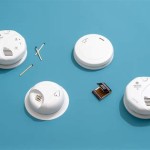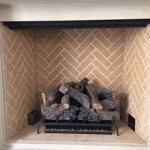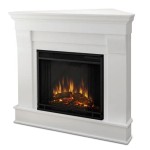```html
Resurfacing Brick Fireplace Ideas: Revitalizing Your Hearth
A brick fireplace often serves as the focal point of a living room, providing warmth and a sense of comfort. Over time, however, the brick can become stained, outdated, or simply lose its appeal. Resurfacing a brick fireplace presents an opportunity to refresh its appearance, aligning it with current design trends and restoring its visual prominence. This article explores various methods and considerations for resurfacing a brick fireplace, offering a comprehensive guide to transforming this essential home feature.
Before undertaking any resurfacing project, a thorough assessment of the existing brick and surrounding structure is crucial. This evaluation identifies any structural damage, such as cracks or loose bricks, that require repair before proceeding with aesthetic enhancements. Moreover, understanding the fireplace's ventilation system and adhering to local building codes is paramount for safety and compliance.
Preparing the Brick Fireplace for Resurfacing
The initial step in any resurfacing project involves preparing the brick surface. This preparation ensures proper adhesion of the new material and a long-lasting, visually appealing result. The preparation process typically involves cleaning, repairing, and priming the brick.
Cleaning the brick removes any existing soot, dust, or grime that may interfere with bonding. This can be achieved through several methods, including:
Wire Brushing:
A stiff wire brush effectively removes loose debris and surface contaminants.Pressure Washing:
This method utilizes pressurized water to dislodge stubborn stains and dirt. However, caution is necessary to avoid damaging softer brick types or forcing water into the mortar joints.Chemical Cleaners:
Specific brick cleaning solutions are available, formulated to dissolve soot and other deposits without harming the brick. Always follow the manufacturer's instructions and wear appropriate protective gear when using chemical cleaners.
After cleaning, any cracks or damaged mortar joints should be repaired. Chipping away loose mortar and reapplying new mortar, a process known as repointing, restores the structural integrity and prevents further deterioration. Matching the existing mortar color and texture is important for a seamless repair.
Priming the brick creates a uniform surface and enhances adhesion. Using a masonry primer specifically designed for brick ensures proper bonding with the resurfacing material. The primer also helps to seal the porous brick, preventing excessive absorption of the new material and ensuring even coverage.
Resurfacing Options: Paint, Stone Veneer, and Tile
Once the brick fireplace is properly prepared, several resurfacing options become available, each offering a distinct aesthetic and level of complexity. These options include painting, applying stone veneer, and installing tile.
Painting Brick Fireplaces:
Painting brick is a relatively simple and cost-effective way to update the fireplace's appearance. Choosing the correct type of paint is essential for durability and longevity.Masonry paint, specifically formulated for brick and concrete, is the preferred choice. This type of paint is breathable, allowing moisture to escape from the brick, preventing peeling and cracking. Latex paint can also be used, but it is crucial to apply a masonry primer beforehand to ensure proper adhesion. Oil-based paints are generally not recommended for brick fireplaces due to their inflexibility and potential for trapping moisture.
The color selection for painting a brick fireplace depends on the desired aesthetic. White or light neutral colors create a bright and modern look, while darker colors can add a touch of drama and sophistication. Consider the overall design of the room and choose a color that complements the existing décor.
Stone Veneer Fireplaces:
Applying stone veneer offers a more substantial transformation, adding texture and visual interest to the fireplace. Stone veneer is a thin layer of natural or manufactured stone that is adhered to the brick surface.Natural stone veneer provides a classic and timeless look, with each stone exhibiting unique variations in color and texture. Manufactured stone veneer, on the other hand, is a more affordable option that replicates the appearance of natural stone. It is also lighter in weight, potentially simplifying the installation process.
Installing stone veneer typically involves applying a layer of mortar to the brick surface and then pressing the stones into the mortar. Spacers are often used to maintain consistent grout lines. Once the mortar has cured, the grout lines are filled with grout, creating a finished and professional look. Proper planning and execution are crucial to ensure a structurally sound and aesthetically pleasing result.
Tile Fireplaces:
Tiling a brick fireplace provides a versatile and customizable option. Tiles are available in a wide range of materials, colors, and patterns, allowing for a personalized design.Ceramic and porcelain tiles are popular choices for fireplace surrounds due to their durability, heat resistance, and ease of maintenance. Natural stone tiles, such as granite or marble, offer a luxurious and elegant appearance. Glass tiles can add a touch of modernity and reflectivity. Consider the overall design of the room and choose tiles that complement the existing décor.
The tiling process involves applying a layer of thin-set mortar to the brick surface and then pressing the tiles into the mortar. Spacers are used to maintain consistent grout lines. Once the mortar has cured, the grout lines are filled with grout, creating a sealed and finished surface. Careful attention to detail is essential to ensure a level and aesthetically pleasing tile installation.
Enhancing the Fireplace Mantel and Surround
Resurfacing the brick fireplace provides an opportunity to update the mantel and surround as well. The mantel serves as a decorative focal point, while the surround defines the area around the firebox. Updating these elements can significantly enhance the overall appearance of the fireplace.
The mantel can be refinished, replaced, or simply painted to complement the new brick surface. Refinishing a wooden mantel involves sanding, staining, and sealing the wood to restore its natural beauty. Replacing the mantel allows for a complete design change, with options ranging from traditional wood mantels to modern floating shelves.
The surround can be enhanced with various materials, such as tile, stone, or wood. Adding a decorative tile border around the firebox can create a visually appealing frame. Incorporating stone accents can add texture and depth. Painting the surround a contrasting color can create a dramatic effect.
Consider the size and shape of the fireplace when choosing mantel and surround elements. A large fireplace can accommodate a more substantial mantel, while a smaller fireplace may benefit from a more streamlined design. Maintaining a balance between the size of the fireplace and the surrounding elements is crucial for creating a cohesive and visually appealing focal point.
Safety Considerations and Building Codes
When resurfacing a brick fireplace, safety should be a primary concern. Ensuring proper ventilation and adhering to local building codes is essential for preventing fire hazards and ensuring safe operation.
The fireplace's ventilation system should be inspected to ensure it is functioning properly. The chimney should be cleaned and inspected for any obstructions or damage. Any repairs to the chimney or flue should be performed by a qualified professional.
Local building codes often specify minimum clearances between the fireplace and combustible materials, such as wood framing or drywall. These clearances must be maintained to prevent fire hazards. Consult with local building officials to determine the specific requirements for your area.
When using paints, adhesives, or other chemical products, always follow the manufacturer's instructions and wear appropriate protective gear, such as gloves, masks, and eye protection. Ensure adequate ventilation to prevent the buildup of harmful fumes. Dispose of waste materials properly according to local regulations.
Resurfacing a brick fireplace can significantly enhance the aesthetic appeal of a living space. By carefully preparing the brick surface, selecting appropriate materials, and adhering to safety guidelines, homeowners can transform their fireplace into a stunning focal point that adds warmth and character to their home. The options presented, from simple paint applications to the more intricate stone veneer installations, provide a framework for revitalizing this vital home feature and aligning it with contemporary design sensibilities.
```
Reface A Fireplace With The Look Of Stone Or Brick Barron Designs

15 Fabulous Fireplace Refacing Ideas Average But Inspired

Brick Fireplace Makeover Before And After Decorating Painting Id Painted Fireplaces Paint

16 Red Brick Fireplace Makeover Ideas

16 Red Brick Fireplace Makeover Ideas
:max_bytes(150000):strip_icc()/MadetobeaMommaBefore-5bb2476446e0fb002607ad4f.jpg?strip=all)
Before And After Fireplace Makeovers

15 Fabulous Fireplace Refacing Ideas Average But Inspired

A Step By Guide To Fireplace Refacing Diy Family Handyman

Transform Your Fireplace With Diy Brick Refacing

Reface A Fireplace With The Look Of Stone Or Brick Barron Designs
Related Posts








